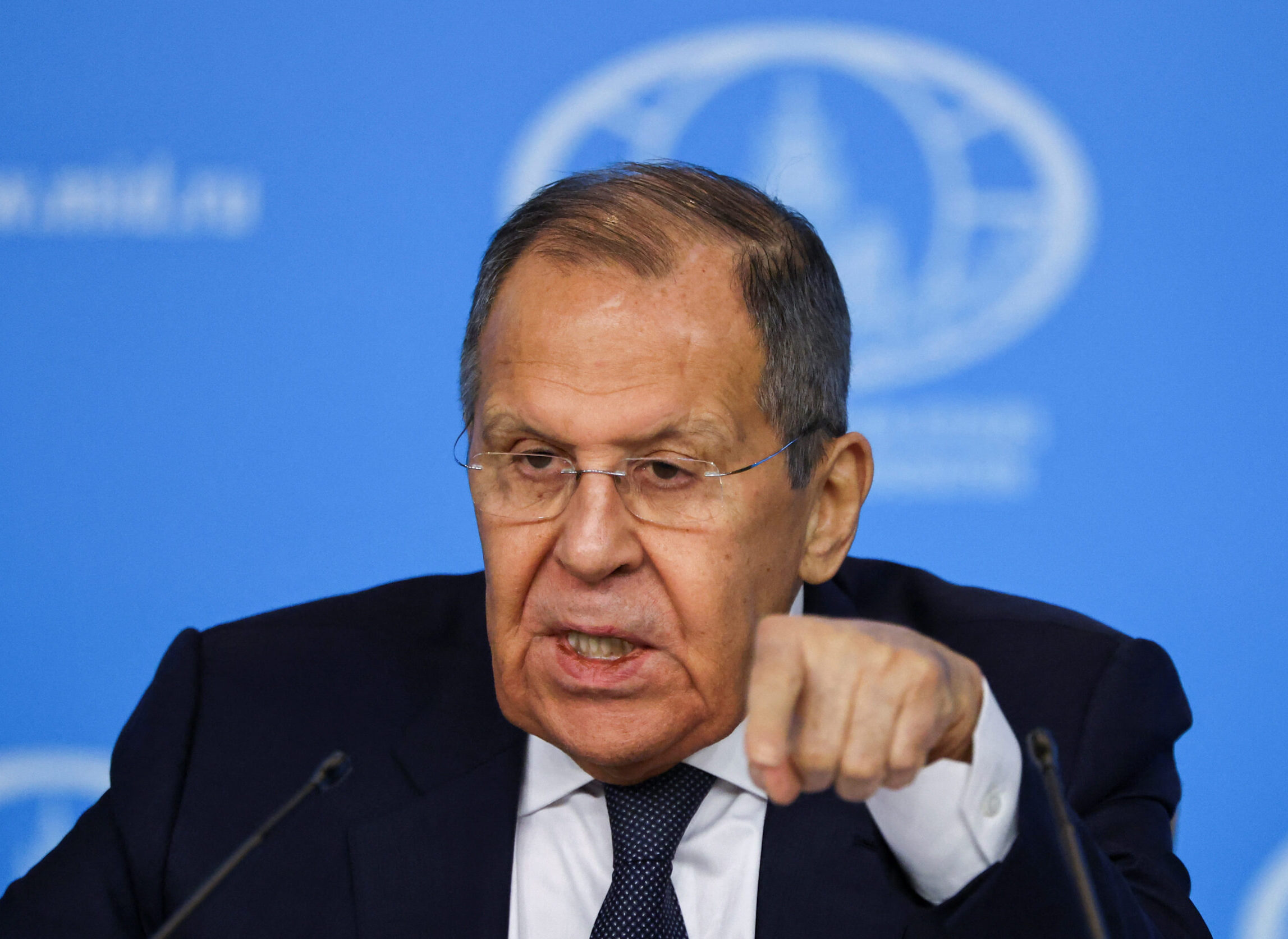In a move likely to cause considerable offense in the White House, Russian Foreign Minister Sergei Lavrov has compared US President Donald Trump’s “America First” concept to Nazi propaganda. This provocative statement from Russia’s top diplomat offers an indication of the mood in Moscow as the United States and Russia engage in preliminary talks over a possible deal to end the invasion of Ukraine.
In an article published on February 4 by the Russia in Global Affairs journal, Lavrov accused the US of undermining the international order with “cowboy attacks,” and claimed that the rhetoric of the Trump administration was reminiscent of Nazi Germany. “The ‘America First’ concept has disturbing similarities to the ‘Germany Above All’ slogan of the Hitler period,” he wrote.
Such attacks are nothing new, of course. The Kremlin has a long history of branding critics and adversaries as Nazis that can be traced all the way back to the height of the Cold War. When the Hungarians rebelled against Soviet occupation in 1956, Moscow condemned the uprising as a “fascist rebellion” before sending in the tanks. It was a similar story during the Soviet suppression of the Prague Spring of 1968. Communist officials even referred to the Berlin Wall itself as “the Anti-Fascist Protective Wall.”
This trend survived the Soviet collapse and has been enthusiastically embraced by the Putin regime. Labeling opponents as Nazis is regarded as a particularly effective tactic in modern Russia as it strikes an emotive chord among audiences raised to revere the staggering Soviet sacrifices in the fight against Hitler’s Germany.
Throughout Putin’s reign, domestic political opponents including Alexei Navalny have been routinely demonized as Nazis. The same strategy is frequently employed in the international arena. When Estonia sought to remove a Soviet World War II monument from Tallinn city center in 2007, the Kremlin media went into a frenzy about “Fascist Estonia,” sparking riots among Estonia’s sizable ethnic Russian population. A long list of other international critics and adversaries have faced the same Nazi slurs.
The most notorious Russian accusations of Nazism have been leveled at Ukraine. Ever since Ukraine’s 2004 Orange Revolution, Russian state propaganda has sought to portray Ukrainian national identity as a modern form of fascism that is virtually indistinguishable from Nazism. This propaganda campaign is rooted in Soviet era attempts to discredit Ukraine’s independence movement via association with World War II collaboration. It reached new lows in 2014 as Putin attempted to legitimize the occupation of Ukraine’s Crimean peninsula and Donbas region.
Moscow’s efforts to portray Ukraine as a Nazi state escalated further following the onset of the full-scale invasion three years ago, with a massive spike in references to “Nazi Ukraine” throughout the Kremlin-controlled Russian media. In this increasingly unhinged environment, few were surprised when Putin announced that one of his two principle war aims was the “denazification” of Ukraine.
It has since become abundantly clear that Putin’s frequent talk of “denazification” is actually Kremlin code for “deukrainianization.” In other words, the ultimate goal of Russia’s current invasion is to create a Ukraine without Ukrainians, with false accusations of Nazism serving as a convenient excuse to justify the destruction of the Ukrainian state and nation.
Eurasia Center events

The history of nationalist politics in independent Ukraine is far removed from the Kremlin’s fascist fantasies. In reality, Ukrainian far-right parties have never come close to holding political power and typically receive far fewer votes than nationalist candidates in most other European countries.
When Ukraine’s frustrated and marginalized nationalists banded together into a single bloc for the country’s last prewar parliamentary election in 2019, they managed to secure a meager 2.16 percent of the vote. Meanwhile, Russian-speaking Jewish comedian Volodymyr Zelenskyy’s landslide victory in Ukraine’s presidential election of the same year served to further highlight the absurdity of Russia’s entire “Nazi Ukraine” narrative.
Ever since Zelenskyy’s election, Russian officials have been tying themselves in knots attempting to explain how a supposedly Nazi state could elect a Jewish leader. In one particularly infamous incident during a spring 2022 interview with Italian TV show Zona Bianca, foreign minister Lavrov responded to questioning about Zelenskyy’s Jewish heritage by claiming that Adolf Hitler “also had Jewish blood.”
Lavrov’s latest comments do not signal a significant shift in the Kremlin position toward the United States and should not be blown out of proportion. Nevertheless, it is always worth paying attention when Russia plays the Nazi card. In this instance, the decision to target Trump personally with Nazi slurs by comparing one of his core political messages to Hitler’s propaganda suggests a degree of unease in Moscow over what the Kremlin can expect from the new US administration.
If Trump follows through on his threats to pressure Putin into peace talks, this unease may soon give way to outright hostility. At that point, we can expect to see yet more lurid Russian accusations of Nazism, this time aimed at the United States. That, after all, is how the Kremlin propaganda machine works. Putin claims to venerate the memory of World War II, but he has done more than anyone to distort the legacy of the conflict for his own political gain.
Peter Dickinson is editor of the ’s UkraineAlert service.
The views expressed in UkraineAlert are solely those of the authors and do not necessarily reflect the views of the , its staff, or its supporters.

The Eurasia Center’s mission is to enhance transatlantic cooperation in promoting stability, democratic values and prosperity in Eurasia, from Eastern Europe and Turkey in the West to the Caucasus, Russia and Central Asia in the East.
Image: Russia’s Foreign Minister Sergei Lavrov speaks during an annual press conference in Moscow, Russia, January 14, 2025. REUTERS/Evgenia Novozhenina








